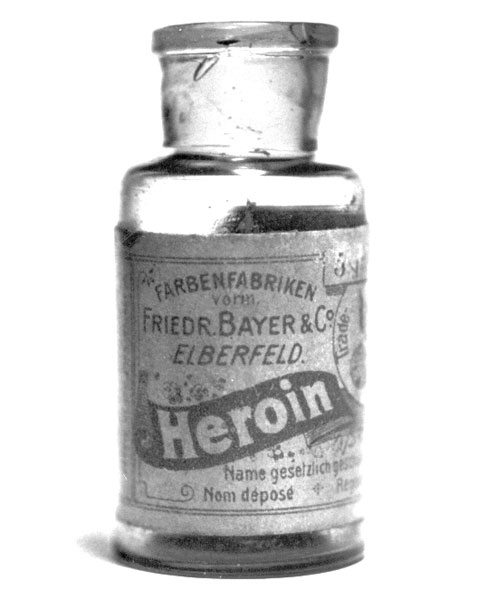
December 18, 2017; Michigan Public Radio
“In Michigan, nearly 1,700 people died of overdoses from an opioid drug in 2016,” reports April van Buren for Michigan Public Radio. Rebecca Haffajee, an assistant health policy professor at the University of Michigan’s School of Public Health, along with her coauthor Stanford health law professor Michelle Mello, writes in the New England Journal of Medicine that, “The opioid epidemic has claimed more than 300,000 lives in the United States since 2000 and could claim another half million over the next decade.” The Centers for Disease Control’s preliminary estimate states that there were 64,070 deaths from drug overdoses in 2016, a 21-percent increase from 2015, with opiates and/or heroin involved in more than 70 percent of the cases.
To date, over 100 lawsuits have been filed by government agencies at the local, state, and federal level, as well as by American Indian nations, Haffajee informs Michigan Public Radio.
So far, notes van Buren, “attempts to hold manufactures and distributors accountable in court through personal injury lawsuits haven’t been all that successful.” A primary reason, indicates van Buren, is that companies can shift responsibility—for example, maybe the party at fault are the doctors who prescribed drugs they shouldn’t have authorized. Or the patients themselves may take the drugs differently than instructed. As Haffajee explains, such factors make it “really difficult to pin all of the blame on manufacturers and distributors.”
To date, settlement amounts have been exceedingly modest. “The largest so far was a $600 million federal settlement with Purdue ten years ago,” Haffajee notes. But Haffajee, van Buren reports, “is optimistic that the suits being filed by federal, state, and local governments have a good chance of getting what they need most to deal with the opioid epidemic.”
As Haffajee and Mello write, with a class action lawsuit, “the causal relationship between the companies’ business practices and the harm is assessed at the group level, with the focus on statistical associations between product use and injury. The use of class actions helped overcome tobacco companies’ defenses based on smokers’ conduct.” It did not happen quickly, but ultimately the so-called Tobacco Master Settlement Agreement “forced large tobacco firms to pay a minimum of $206 billion over 25 years.”
Sign up for our free newsletters
Subscribe to NPQ's newsletters to have our top stories delivered directly to your inbox.
By signing up, you agree to our privacy policy and terms of use, and to receive messages from NPQ and our partners.
Establishing a “class” in legal terms is not easy. One can expect drug company lawyers to argue that cases are not “similar enough” to constitute a class. But as Haffajee and Mello write, as “the population harmed by opioids grows and more information about the populations is documented, it becomes easier to identify subgroups with similar factual circumstances and legal claims.”
Additionally, there are the government suits themselves. By definition, state, federal, local, and American Indian lawsuits are not personal injury lawsuits. This, says Haffajee, could make it harder for drug companies to escape liability “because there is no doctor or patient to blame.”
The focus of these government cases is on systemic social damage rather than harm to specific individuals. The claims, Haffajee notes, center on the proposition that opioid manufacturers and distributors “have in some way debilitated our social system and we need to repair them.’”
Four possible legal lines of attack in these government cases are:
- To highlight the “public scourge created by the opioid epidemic…by oversaturating the market with drugs and failing to implement controls against misuse and diversion, thereby creating a public nuisance.”
- To claim deceptive marketing. “In these fraud claims,” Haffajee and Mello write,
“governments charge that companies made false representations about their products’ addictiveness and effectiveness, all calculated to mislead the state, prescribers, and the public. This argument proved powerful in suits against tobacco companies.” - To allege lax monitoring of suspicious opioid orders. “The federal Controlled Substances Act requires drug suppliers to maintain effective controls against, and to notify the Drug Enforcement Agency of, potentially illegitimate orders,” Haffajee and Mello note.
- To highlight “unjust enrichment” through unfair business practices: In these cases, the government can claim that pharma companies received unfair windfall profits. As Haffajee and Mello explain, “For opioids…government payment for excessive prescriptions under public insurance programs directly contributed to companies’ profits. Already, two large settlements have occurred in cases that included unjust enrichment claims, although pharmaceutical companies avoided admitting fault.”
To date, Haffajee and Mello concede, “opioid litigation has yet to financially dent the $13-billion-a-year opioid industry.” But, as Haffajee points out, the need for resources to address the opioid crisis is not in question: “The opioid epidemic is in the tens or hundreds of billions per year in cost to society, so we need much, much more money.”—Steve Dubb











